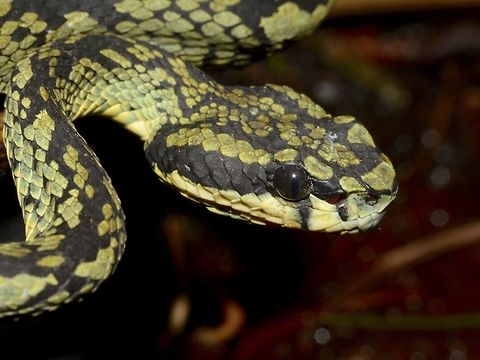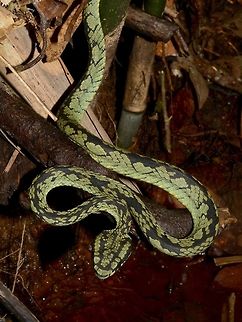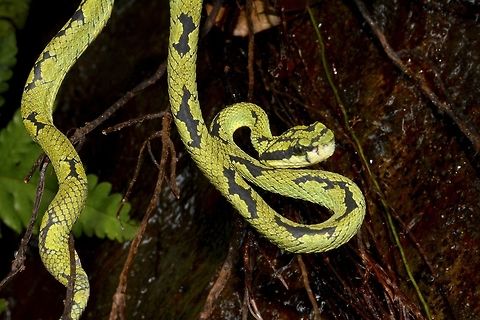
Appearance
''Trimeresurus trigonocephalus'' is a sexually dimorphic, mid-sized, cylindrical species. These snakes measure 20–25 cm at birth, and males grow to a maximum total length of 60–75 cm . The neck is distinct from the flattened, triangular head. There is a loreal pit on each side of the head. Mid-sized eyes and a short, rounded, broad snout are present. The males are considerably smaller than females, which can grow up to 130 cm in total length. The ground color of the snake is variable and cryptic. Typically, it is a green snake with a black variegated pattern, and a black temporal line is usually present. The wet zone snakes have these black patterns more clearly marked. The vertebral area has a tinge of yellow. The tail is black. The ventral scales are light greenish-yellow or may even be grey. Some snakes have only the black temporal line and the black tail, with the rest of the body being green. In addition, males tend to have a blue coloration, whereas the females are predominantly green. These are bulky snakes with prehensile, short tails, suiting their arboreal lifestyle.
Naming
Common names include: Sri Lankan green pit viper, Sri Lankan pit viper, ''pala polonga'' , and green pit viper.
Behavior
It is arboreal and nocturnal, occasionally descending to the ground in search of food such as lizards, frogs, small mammals, and birds. This sluggish pit viper is usually encountered on low shrubs during morning hours, but it mostly occupies in grasslands and rain forests. In mornings, it is seen to stay on top of trees to obtain sun rays to heat its body. It uses its tail to hold on to a tree branch. This is not a particularly defensive species, but if agitated, it will vibrate its tail tip, form a sinuous loop with the fore body, and lash and attempt to bite, seldom with a hissing sound. It produces live young mostly during June and July.Reproduction
These are viviparous snakes. About five to 25 young are produced at once.Defense
The venom is primarily haemotoxic, with victims experiencing severe pain and swelling of the bitten area, oedema and blisters, and localised tissue necrosis; the pain of the wound may last for a few days. Ptosis and lymphadenopathy takes place. Also in some victims, polyuric renal failure and cardiac electrophysiological dysfunction occur, but fatalities have not been reported.References:
Some text fragments are auto parsed from Wikipedia.